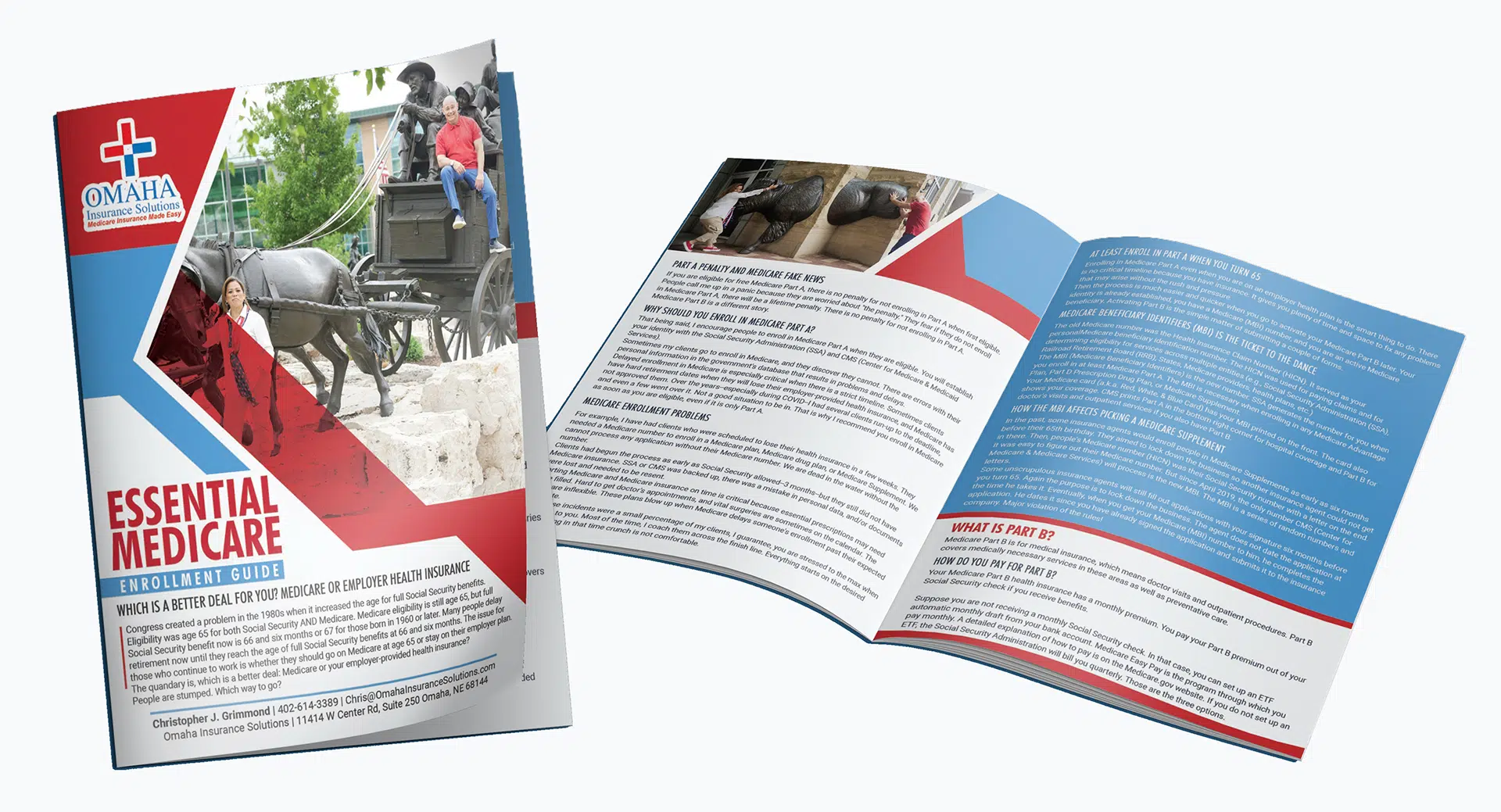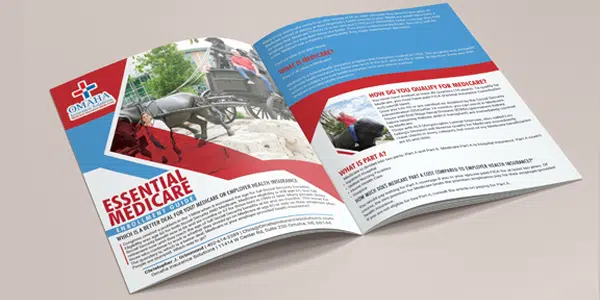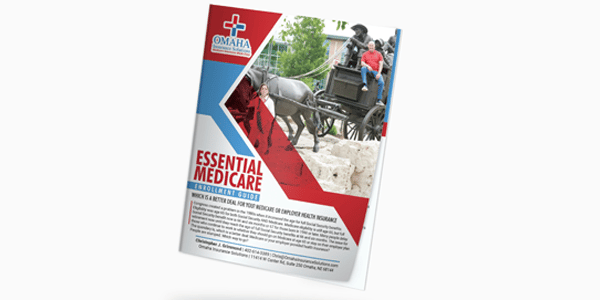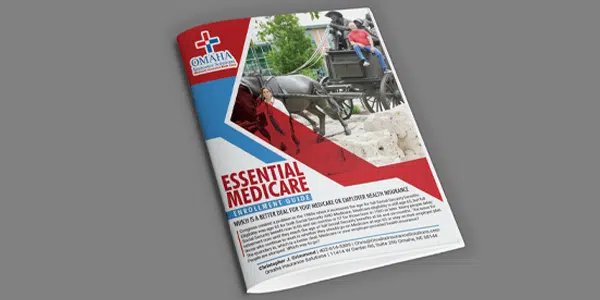Prescription DrugsCategory:
 Are you confused about Medicare Part D health plans? Don’t worry, you’re not alone. Understanding your options can be overwhelming with all the jargon and complex rules. That’s why we’re here to demystify everything for you.
Are you confused about Medicare Part D health plans? Don’t worry, you’re not alone. Understanding your options can be overwhelming with all the jargon and complex rules. That’s why we’re here to demystify everything for you.
Whether you’re new to Medicare or have been enrolled for years, this article is designed to help you understand the key aspects of Part D plans, including what they cover, how they work, and how to choose the right plan for your needs.
We’ll also answer common questions, such as what medications are covered, how to find the most cost-effective plan, and how to navigate the dreaded coverage gap, known as the “donut hole.”
So, if you’re ready to tackle the confusion surrounding Medicare Part D health plans and take control of your healthcare, let’s dive in and get started.
Who is Eligible for Part D?
Medicare Part D is a prescription drug coverage program the federal government offers to Medicare beneficiaries. Before 2006, there were no government-sponsored prescription drug plans, and the cost of medications was becoming overwhelming for seniors. The Bush Administration introduced a partnership between Medicare and insurance companies known as Part D.
To be eligible for Medicare Part D, you must be enrolled in either Medicare Part A OR Part B. Part A covers hospital stays, while Part B covers doctor visits and outpatient services, but enrollment in either makes you eligible for the Medicare Part D prescription drug benefit.
Medicare Part D health plans are offered by private insurance companies approved by Medicare. These plans are available as standalone prescription drug plans (PDPs) or as part of a Medicare Advantage plan (Part C), which offer additional benefits beyond prescription drug coverage. You must have both Part A and Part B to be eligible for Part C.
 Coverage Options and Costs Under Medicare Part D Health Plans
Coverage Options and Costs Under Medicare Part D Health Plans
Medicare Part D plans provide coverage for a wide range of prescription medications. Each plan has its own formulary, which is a list of covered drugs. Medicare regulations require the plan to have at least two drugs in each of the categories CMS (Center for Medicare & Medicaid Services) specifies. These formularies are divided into tiers, each with a different cost-sharing structure.
The costs associated with Medicare Part D plans can vary depending on your chosen plan. Several components to consider include the monthly premium, annual deductible, copayments or coinsurance, and coverage gap.
Premiums for Part D plans can vary widely, so it’s vital to compare plans to find one that fits your budget. In addition to the premium, many plans have an annual deductible that you must meet before many drug copays work. Once you’ve met the deductible, you’ll typically pay a copayment or coinsurance for each prescription.
It’s also important to be aware of the coverage gap, also known as the “donut hole.” The gap occurs when you reach a specific spending limit; then, your prescription drug costs increase significantly in many cases. However, the coverage gap is gradually closing, thanks to the Inflation Reduction Act legislation.
How to Choose the Right Medicare Part D Health Plan in Your Area
Choosing the right Medicare Part D plan can seem daunting, but with careful consideration, you can find a plan that meets your needs and budget. Here are some factors to consider when comparing plans:
- Coverage: Look for a plan that covers all essential medications. Each plan has its own formulary, so it’s important to review the list of covered drugs to ensure your prescriptions are included.
- Costs: Consider the monthly premium, annual deductible, copayments or coinsurance, and the coverage gap. Calculate how much you would pay out-of-pocket for your medications under each plan to determine which one offers the best value. The total cost is the critical comparison.
- Network: Check if your preferred pharmacies are in the plan’s network. Some plans have preferred pharmacies where you can get lower copayments or coinsurance.
When we run client’s medications, I am still amazed by the difference in cost from one pharmacy to another.
- Plan ratings: The Centers for Medicare and Medicaid Services (CMS) rates Medicare Part D plans on a five-star scale. These ratings can give you an indication of a plan’s quality and customer satisfaction.
By carefully evaluating these factors, you can narrow down your options and choose a Medicare Part D plan that best fits your needs.
Understanding the Different Tiers and Formularies
Medicare Part D formularies are divided into tiers, with each tier representing a different level of cost-sharing. The exact number of tiers can vary depending on the plan, but most plans have at least four tiers.
Tier 1 typically includes generic drugs and has the lowest cost-sharing. Tier 2 includes more expensive but still generic low-cost drugs. Tier 3 is for preferred brand-name drugs, followed by Tier 4 for non-preferred brand-name drugs. Tier 5 is usually reserved for specialty medications, with higher cost-sharing.
It’s important to note that not all drugs are covered on every plan’s formulary, and the specific drugs included in each tier can vary. Before enrolling in a Part D plan, reviewing the formulary to ensure your medications are covered and understanding the associated cost-sharing for each tier is essential.
 My Experience with Medicare Part D Health Plans in Nebraska & Iowa
My Experience with Medicare Part D Health Plans in Nebraska & Iowa
We have over 2,000 Medicare clients at Omaha Insurance Solutions. During the Medicare Annual Election Period (Oct 15th—Dec 7th), we offer an annual review of clients’ plans, especially the medication part of their Medicare plan. Consequently, we run the medications for hundreds of clients through our Medicare Part D health plan software. It performs thousands of calculations and shows the plans in order of least expensive to most for overall cost. The numbers are broken down into various totals and subtotals by months and tiers for premiums and copays.
We put all the data on a big 42-inch screen for the clients to view. The software can easily manipulate the data, so clients can see which plans work best for their mix of medications, which pharmacies give the best pricing, and when and how much they may fall in the Medicare Gap (or “Donut Hole”) over the course of the year, if at all.
You quickly notice patterns after running thousands of simulations of Medicare Part D health plans during Annual Election Period in Nebraska and Iowa. You notice the same four or five plans at the top. Certain pharmacies consistently perform better for certain plans. You see the big differences in which insurance companies and plans are the winners in the new year compared to the previous year. Some inexpensive drugs are no longer covered under certain plans, or the price charged is totally out of proportion to the actual cost. From our experience of running our Part D analysis software for many years and for so many people, we quickly recognize patterns and can advise clients accordingly.
Tips for Saving on Medicare Part D
Prescription drug costs can add up quickly, but there are several strategies you can use to save money with your Medicare Part D plan. Here are some tips to consider:
- Generic drugs: Whenever possible, opt for generic medications. Generic drugs are just as effective as brand-name drugs but are often significantly cheaper.
- Mail-order pharmacy: Some Part D plans offer discounts for using a mail-order pharmacy. Mail-order can be a convenient and cost-effective way to get your medications delivered to your door.
- Medication reviews: Review your medications with your doctor or pharmacist to ensure you’re still taking the most appropriate and cost-effective drugs. They can also identify any potential drug interactions or duplications.
- Extra Help program: If you have limited income and resources, you may qualify for the Extra Help program, which helps cover the costs of prescription drugs.
By implementing these strategies, you can maximize your savings and ensure you get the most value from your Medicare Part D plan.
Common Misconceptions about Medicare Part D
Several common misconceptions surrounding Medicare Part D can lead to confusion and misinformation. Let’s debunk some of these myths:
- Myth: Medicare Part D covers all prescription drugs. Reality: Part D plans have formularies that only cover certain drugs. It’s crucial to review the formulary to ensure your medications are covered.
- Myth: You can switch plans anytime. Reality: You can only switch plans during the annual enrollment period or if you qualify for a special enrollment period.
- Myth: All Part D plans have the same costs and coverage. Reality: Part D plans can vary in terms of premiums, deductibles, copayments, and formularies. It’s important to compare plans to find the best fit.
- Myth: Medicare Part D health plans do not change much from year to year. Reality: Part D plans change, and in some cases, they change a lot.
By understanding these misconceptions, you can make more informed decisions about your Medicare Part D coverage.
Enrolling in a Medicare Part D Plan

Initial Enrollment Period
Enrolling in a Medicare Part D plan is relatively straightforward, but there are specific enrollment periods to be aware of. The Initial Enrollment Period (IEP) is the seven months surrounding your 65th birthday, including the three months before, the month of, and the months after your birthday.
Annual Enrollment Period
If you miss your IEP, you can enroll during the Annual Enrollment Period (AEP), which runs from October 15th to December 7th each year. During this period, you can switch plans or join a Part D plan for the first time.
Special Enrollment Periods
Special Enrollment Periods (SEPs) allow you to enroll outside the IEP or AEP if you experience certain qualifying events. There are many SEP types. One that is very common is when clients move out of their plan’s service area. Clients move and then call us because they have problems getting medications. “Yes, Medicare canceled your plan when you moved out of the area.”
To enroll in a Medicare Part D plan, contact the plans directly, call 1-800-MEDICARE, or call your agent.
If you call an insurance company, they will tell you one of their plans is best for you. They cannot see or sell you the other insurance companies and their plans.
The people you speak with at Medicare don’t work with insurance companies or Medicare plans. They don’t know the plans or how they work. It is like talking to a person who never worked on a car engine, and his only knowledge is from reading a manual and looking at diagrams.
They run the medications you give them through the software. Whatever the software tells them is what they tell you. They have no experience because they have no clients and get no feedback on the advice they are dispensing. There are no consequences to them if they give bad advice. They will never talk to the same person again. They can recommend anything without being held responsible for the advice dispensed. Insurance agents can be held responsible and are.
The Only Way to Get the Information to Make A Truly Informed Choice
I highly recommend working with a trusted and experienced insurance professional who is independent. In other words, an independent agent or broker can show you most or all of the Medicare Part D health plans in your area and the Medicare Advantage plans with prescription drugs. You want to be confident in the person’s knowledge and expertise. Almost anyone can get an insurance license. The person you use should demonstrate knowledge and expertise to you about Medicare and the various insurance plans. They should display reliability. Those are the people to trust. Think about how you pick a doctor.
All Medicare Part D Health Plans and Advantage Plans Are Local
Plans vary from state to state and region to region. At Omaha Insurance Solutions, we are intimately acquainted with the 21 Medicare Part D plans in Nebraska & Iowa, the 30 Medicare Advantage plans in Nebraska, and the 25 Medicare Advantage plans in Iowa. Clients give us daily feedback on how well or poorly the various companies and plans are performing at any given time. We are familiar with our local networks–CHI Health, Nebraska Medicine, Methodist Health Systems, and Bryan Hospital–and other providers. My home is down the street from MD West One. I have had multiple surgeries myself at OrthoNebraska. We know well the Medicare Advantage and Part D plans in Omaha, Lincoln, and Council Bluffs and the doctors and institutions that work with them.
Nebraska, and the 25 Medicare Advantage plans in Iowa. Clients give us daily feedback on how well or poorly the various companies and plans are performing at any given time. We are familiar with our local networks–CHI Health, Nebraska Medicine, Methodist Health Systems, and Bryan Hospital–and other providers. My home is down the street from MD West One. I have had multiple surgeries myself at OrthoNebraska. We know well the Medicare Advantage and Part D plans in Omaha, Lincoln, and Council Bluffs and the doctors and institutions that work with them.
Clients often call us asking for help navigating the customer service bureaucracy when they encounter problems. We constantly hear what is working and not with Medicare Part D health plans in the Omaha, Lincoln, and Council Bluffs areas. We do three-way phone calls with the insurance provider, the pharmacies, and clients to get problems solved. Sometimes, we connect the billing departments of one of the networks with the insurance company and make sure they are communicating correctly so a client is not billed incorrectly.
Unlike the SHIP office or other volunteer organizations that help seniors with Medicare, we find out directly from clients how well Medicare and the Medicare insurance plans are serving them.
Frequently Asked Questions About Medicare Part D
- Question: What medications are covered under Medicare Part D?
Answer: Part D plans cover a wide range of prescription drugs, including generic and brand-name medications. Each plan has its own formulary, so it is essential to review the list of covered drugs.
- Question: How do I find the most cost-effective Part D plan?
Answer: To find the most cost-effective plan, consider factors such as monthly premiums, deductibles, copayments or coinsurance, and the coverage gap. Use the Medicare Plan Finder tool to compare plans based on your specific medications and needs.
Our propriety software sorts through all the plans in your area, confirm the medications on the formulary, lists the copays and premiums, totals the amounts, and reveals the star rating. I believe the information is presented in a much friendlier format than Medicare’s Plan Finder. We perform the service for FREE. Medicare and the insurance companies compensate the agents.
- Question: What is the coverage gap or “donut hole”?
Answer: The coverage gap temporarily increases prescription drug costs after reaching a certain spending limit. However, it is gradually disappearing.
- Question: Can I get assistance paying for my Medicare Part D plan?
Answer: If you have limited income and resources, you may qualify for the Extra Help program, which provides financial assistance to cover the costs of prescription drugs.
Conclusion: The Importance of Understanding Medicare Part D
Medicare Part D health plans play a crucial role in helping seniors and individuals with disabilities afford their prescription medications. By understanding the in’s and out’s of Part D plans, you can make informed decisions about your healthcare coverage and ensure you get the most value from your plan.

Christopher J. Grimmond, MA, CFP
This guide has given you the knowledge you need to demystify Medicare Part D, from knowing what medications are covered to navigating the different tiers and formularies. Remember to review your options, compare plans, and consider cost-saving strategies to maximize your savings.
Don’t let the confusion surrounding Medicare Part D hold you back from taking control of your healthcare. With the right plan and information, you can confidently navigate the world of Medicare Part D and ensure you have access to the medications you need.
If you want assistance and objective analysis of your area’s Medicare Part D health plans, contact us at [email protected] and 402-614-3389. We will provide you with unbiased and free advice on the Medicare plans that will work for you.
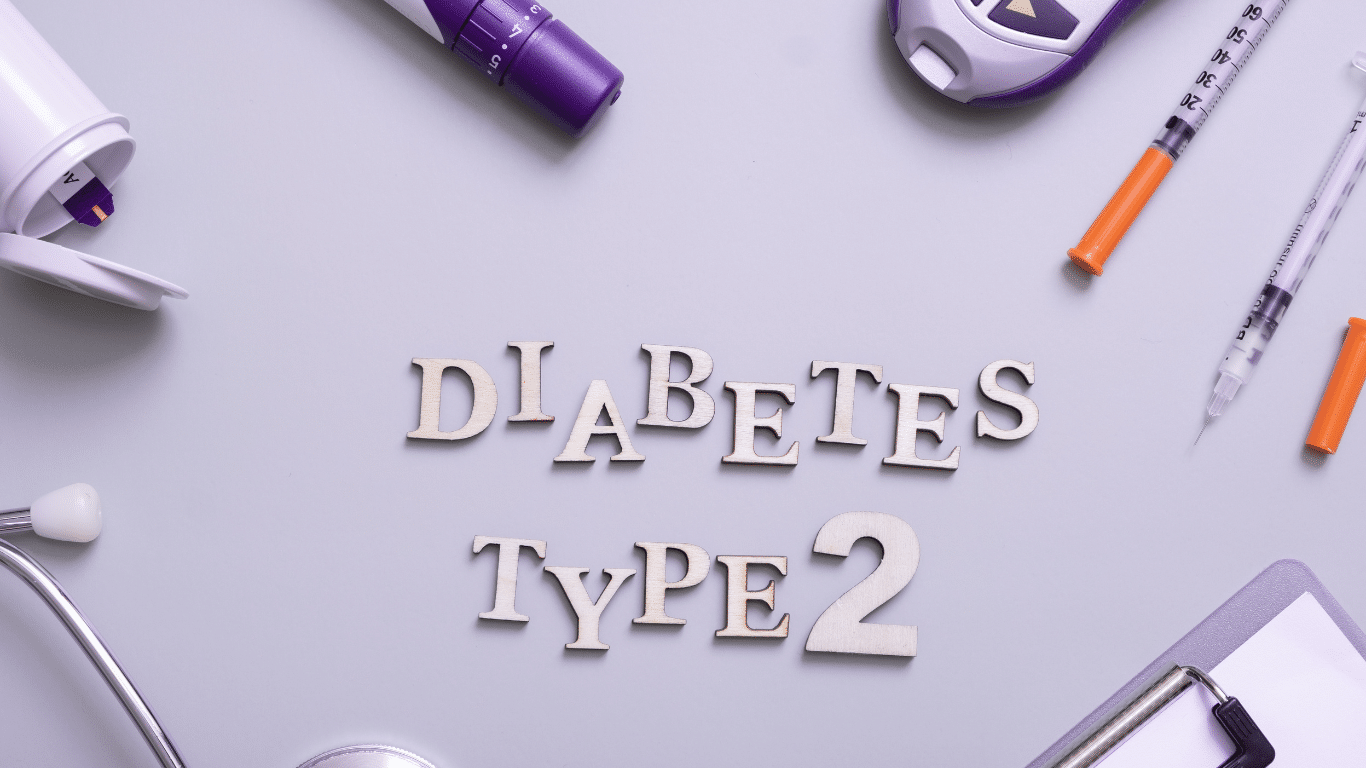 Are you looking for comprehensive information on Medicare coverage for Ozempic? Look no further! In this article, we’ll provide everything you need to know about this medication and how Medicare covers it.
Are you looking for comprehensive information on Medicare coverage for Ozempic? Look no further! In this article, we’ll provide everything you need to know about this medication and how Medicare covers it.
Ozempic is a popular prescription medication used to treat type 2 diabetes. It belongs to a class of drugs called GLP-1 receptor agonists, which help lower blood sugar levels and improve overall glycemic control in individuals with diabetes. However, understanding how Medicare covers this medication can sometimes be confusing.
Whether you’re already enrolled in Medicare or planning to do so, it’s crucial to understand the coverage options available for Ozempic clearly. This knowledge can help you make informed decisions about your healthcare and ensure you receive the treatment you need while minimizing out-of-pocket costs.
In this article, we’ll dive into various aspects of Medicare coverage for Ozempic, including the different parts of Medicare, potential costs, coverage criteria, and more. So, if you’re ready to learn about Medicare coverage for Ozempic, let’s get started!
What is Ozempic?
Ozempic is a medication used to treat type 2 diabetes in the class of drugs called GLP-1 receptor agonists, which help lower blood sugar levels. This medication is administered once weekly via injection, making it a convenient option for those managing diabetes. Ozempic is effective in reducing A1C levels and promoting weight loss in patients.
-
How Does Ozempic Work?
Ozempic works by mimicking the action of a naturally occurring hormone called glucagon-like peptide-1 (GLP-1) in the body. GLP-1 helps regulate blood sugar levels by stimulating insulin release, slowing down digestion, and reducing appetite. By activating GLP-1 receptors, Ozempic helps lower blood sugar levels, decrease appetite, and promote weight loss.
body. GLP-1 helps regulate blood sugar levels by stimulating insulin release, slowing down digestion, and reducing appetite. By activating GLP-1 receptors, Ozempic helps lower blood sugar levels, decrease appetite, and promote weight loss.
-
Who Can Benefit from Ozempic?
Ozempic is primarily prescribed to individuals with type 2 diabetes who have not achieved adequate glycemic control through lifestyle changes, such as diet and exercise, or oral diabetes medications alone. It is typically used as an adjunct to diet and exercise to improve blood sugar control.
Like any medication, Ozempic may have potential side effects. Common side effects may include nausea, vomiting, diarrhea, and constipation. These side effects are usually mild and tend to improve over time. However, discussing any concerns or persistent side effects with your healthcare provider is essential.
 The Importance of Medicare Coverage for Ozempic
The Importance of Medicare Coverage for Ozempic
Understanding Medicare coverage for Ozempic is crucial, especially for individuals with type 2 diabetes who rely on this medication for their health and well-being. Medicare is a federal health insurance program that provides coverage for eligible individuals aged 65 and older, as well as individuals with specific disabilities. Having Medicare coverage for Ozempic can significantly reduce out-of-pocket costs for an expensive medication and ensure access to this essential treatment. According to CMS (Center for Medicare & Medicaid Services), over 459,000 Medicare beneficiaries were on Ozempic, costing CMS over $2.6 billion in 2021.
Understanding Medicare Part D Prescription Drug Coverage
Medicare Part D is the prescription drug coverage portion of Medicare. It is an optional benefit that helps cover the cost of prescription medications, including Ozempic. To receive Medicare Part D coverage, individuals must be enroll in a standalone prescription drug plan (PDP) or a Medicare Advantage plan (Part C) that includes prescription drug coverage.
Private insurance companies approved by Medicare offer Medicare Part D plans. These plans have formularies, which are lists of covered medications. Ozempic is typically included in the formularies of most Medicare Part D plans, but the specific coverage details may vary. It’s essential to review the formulary of the plan you’re considering to ensure Ozempic is covered and to understand any associated costs.
Medicare Part D in the Omaha Metro
 There are 21 Medicare Part D prescription drug plans among seven private insurance companies in the Omaha, Lincoln, and Council Bluffs areas. Seventeen Part D prescription drug plans cover Ozempic. Four do not currently include Ozempic on the formulary. If you are enrolled in those plans, you will have to work with the plan and your doctor for an exception.
There are 21 Medicare Part D prescription drug plans among seven private insurance companies in the Omaha, Lincoln, and Council Bluffs areas. Seventeen Part D prescription drug plans cover Ozempic. Four do not currently include Ozempic on the formulary. If you are enrolled in those plans, you will have to work with the plan and your doctor for an exception.
The plan cost of Ozempic ranges from approximately $800-$950 per month. This amount is used to calculate the levels of cost sharing between the plan and you. This cost-sharing also includes any other medications you are taking. The total will determine how quickly you go from the initial phase, where your Ozempic may cost only $11 to $47 for a month’s supply, to the Gap, when Ozempic may jump to $150–$250, depending upon the plan, excluding your monthly premium for the plan itself.
 Medicare Part C or Medicare Advantage in the Omaha Metro
Medicare Part C or Medicare Advantage in the Omaha Metro
There are 22 Medicare Advantage/Part C plans with prescription drug coverage among six private insurance companies in the Omaha, Lincoln, and Council Bluffs areas. All 21 Advantage plans list Ozempic on their formulary. The plan cost of Ozempic ranges from approximately $890 to $950 per month. This amount is used to calculate the levels of cost sharing between the plan and you. This cost-sharing also includes any other medications you are taking. The total will determine how quickly you go from the initial phase, where your Ozempic may cost only $47 for a month’s supply, to the Gap, when Ozempic may jump to $225–$295, depending upon the plan, excluding your monthly premium for the plan itself if it is not zero.
Eligibility Criteria for Medicare Coverage of Ozempic
 To be eligible for Medicare coverage of Ozempic, you must be enrolled in Medicare Part D or a Medicare Advantage plan that includes prescription drug coverage. Individuals eligible for Medicare Part A and/or Part B are generally eligible for Medicare Part D.
To be eligible for Medicare coverage of Ozempic, you must be enrolled in Medicare Part D or a Medicare Advantage plan that includes prescription drug coverage. Individuals eligible for Medicare Part A and/or Part B are generally eligible for Medicare Part D.
Additionally, Medicare Part D plans may have their own eligibility criteria, such as residence in a specific service area or specific medical conditions. Reviewing the eligibility requirements of the Part D plans in your area is essential to ensure you meet the criteria.
Generally, once your doctor prescripts Ozempic within the standard amounts, the plan will cover Ozempic if it is on the formulary. If it is not on the formulary, you will need to apply for an exception.
Steps to Obtain Medicare Coverage for Ozempic
To obtain Medicare coverage for Ozempic, follow these general steps:
- Enroll in Medicare Part A and/or Part B if you haven’t already done so.
- Decide whether to enroll in a standalone Medicare Part D plan or a Medicare Advantage plan with prescription drug coverage.
- Research and compare Part D plans available in your area to find one that covers Ozempic and meets your healthcare needs.
- Enroll in the Part D plan of your choice during the initial or annual open enrollment period.
- Once enrolled, work with your healthcare provider to obtain a prescription for Ozempic.
- Take your prescription to a pharmacy in-network with your Part D plan and fill your prescription.
It’s important to note that the specific steps and requirements may vary depending on your location and the Part D plan you choose. Consult with Medicare resources or a licensed insurance agent for personalized guidance.
Medicare Coverage Limitations for Ozempic
While Medicare Part D covers Ozempic, certain limitations and cost-sharing requirements may exist. These limitations can include:
- Deductible: Part D plans may have an annual deductible that must be met before coverage begins. The deductible amount varies by plan. The maximum deductible for 2024 is $545. Twelve Part D plans in
 our area out of 21 have a $545 deductible. Three Part D plans have a zero deductible.
our area out of 21 have a $545 deductible. Three Part D plans have a zero deductible. - Copayments or Coinsurance: After meeting the deductible, you may be responsible for copayments or coinsurance for each prescription. The amount will depend on the specific plan and formulary tier Ozempic falls under.
- Quantity Limits: Some Part D plans may impose quantity limits on Ozempic, meaning they will only cover a certain amount per prescription or within a specific time frame.
- Prior Authorization: Certain Part D plans may require prior authorization before covering Ozempic. This means that your healthcare provider will need to provide additional information to the plan to demonstrate medical necessity.
Reviewing the details of your chosen Part D plan to understand any limitations and cost-sharing requirements associated with Ozempic is crucial.
Alternative Options for Obtaining Ozempic
In addition to Medicare Part D coverage, there are alternative options for obtaining Ozempic. These options include:
- Manufacturer Assistance Programs: The manufacturer of Ozempic may offer assistance programs to individuals who meet certain eligibility criteria. These programs can provide financial assistance or free medication to eligible individuals.
- Pharmaceutical Discount Cards: Various pharmaceutical discount cards are available that can help reduce the cost of medications, including Ozempic. These cards are typically free and can be used in addition to Medicare Part D coverage.
- State Pharmaceutical Assistance Programs (SPAPs): Some states offer SPAPs that provide additional prescription drug coverage or financial assistance to eligible individuals. These programs can help lower the cost of Ozempic for those who qualify. Nebraska and Iowa do not have these programs.
- EXTRA HELP is a federal program for those on Medicare to help with medication costs. Assistance depends upon income limits and asset levels.
It’s important to explore these alternative options to ensure you’re taking advantage of all available resources for obtaining Ozempic at an affordable cost.
Additional Resources for Understanding Medicare Coverage for Ozempic
Understanding the intricacies of Medicare coverage for Ozempic can be complex. Fortunately, there are additional resources available to help you navigate this process:
- Medicare.gov: The official Medicare website provides comprehensive information about Medicare coverage options, including Part D and prescription drug coverage. The website provides detailed information, plan comparisons, and enrollment resources.
- State Health Insurance Assistance Programs (SHIPs): Each state has SHIPs that offer free, personalized assistance to Medicare beneficiaries. These programs can guide Medicare coverage options, including Part D, and help you understand how Ozempic is covered in your specific state.
- Licensed Insurance Agents: Working with a licensed insurance agent specializing in Medicare can provide valuable guidance and support. These professionals can help you navigate your area’s various Part D plans and assist with enrollment.
The Bottom Line On Ozempic Medicare Coverage

Christopher Grimmond
Medicare coverage for Ozempic is an important consideration for individuals with type 2 diabetes. Understanding how Medicare Part D works and the potential costs associated with obtaining Ozempic can help ensure you have access to this medication while minimizing out-of-pocket expenses. By utilizing the resources available and exploring alternative options, you can make informed decisions about your healthcare and receive the necessary coverage for Ozempic.
We are a local and independent Medicare insurance agency. Let us find the plan that covers your medications within your budget. We cost you nothing. We charge you nothing. We’re FREE. Call us at 402-614-3389 to speak with a licensed insurance agent professional with over 20 years of insurance experience and over 2,000 Medicare insurance clients. We will get it done right.
Many people have heard of the Medicare Donut Hole, but even those on Medicare are not familiar with what the donut hole really means unless they fall into it.

When you are in the Medicare Donut Hole, you know it and quickly learn what it means.
Clients call me monthly asking, “What’s going on? My medication jumped from $45 to $145!” I say, “Oh, you’re probably in the Medicare Gap, or the more popular name is the ‘donut hole.”’ They ask, “What’s that?”
Even clients I have warned ahead of time usually still call with distressed and perplexed voices. People don’t really begin to grasp what’s happening until it happens.
Medicare Donut Hole Explained
How to explain the Medicare Donut Hole? There is nothing logical about the Medicare Donut Hole (or Medicare Gap). The government actuaries devised this idea to deal with many Medicare beneficiaries who are on many extremely expensive medications.
Think about it this way: We all pay for auto insurance. Most of us do not get into accidents or kill anyone, thankfully. Over a long driving career, there may be some fender benders, but nothing major.
So we complain a little, but we pay the insurance premiums. It’s the price of doing business. We understand that more people need to pay in than people take out for accidents and injuries for insurance to work. Medicare Part D prescription drug insurance is similar. We need more people paying in than taking out.
The Problem Of Expensive Prescriptions

When we were working, our employers and we paid a lot of health insurance premiums, including medication copays. The age group for employer plans is 18-64. Not many people were on Eliquis, Toujeo, Xarelto, Jardiance, Ventolin Inhalers, etc. However, when it comes to Medicare, you have people ages 65-100, and the percentage of persons on expensive medications is enormous.
If the cost and risk were evenly distributed among all participants without distinction, Medicare Part D prescription drug plans would be significantly more expensive — so expensive that those who aren’t on medications or very few medications would never buy a Medicare Part D plan.
Remember, you need more people paying into the insurance plan than taking out. The magical actuaries at Medicare came up with an idea. Voila, the Medicare Donut Hole!
4 Phases To the Medicare Part D Plans
The Medicare Part D prescription drug program is broken down into four phases. The first phase is the deductible. The deductible for 2023 will be $505. The purpose of any deductible is to ensure that people do not charge recurring and minor costs to the insurance plan. The consumer needs to foot the bill for those low-cost expenditures. All insurance policies have some deductible built into the policy. Otherwise, premiums would be astronomical.
Phase 1: Deductible
In the case of Part D plans, the deductible is usually only for the more expensive Tier 3 medications. The plan entirely or mostly covers minor and inexpensive medications.
Phase 2: Initial Stage
The second phase is the initial stage. The Medicare initial stage is how insurance generally feels to the consumer. There is a claim, and the insurance pays most of the claim. The insured pays a fourth or a fifth of the actual cost.
Most people on Medicare never get out of the Medicare initial phase. They may even be on many medications, but their cost is insufficient to drive them into the Gap.

Phase 3: The Gap / Medicare Donut Hole
The third phase is the Medicare Gap (or Medicare Donut Hole). You cross this threshold when you and the plan have paid at least $4,660 in the insurance company’s cost of the medications.
You’ve paid about a fourth of the cost out of your pocket. The insurance companies paid the rest. You have now thoroughly and completely crossed over into the Medicare Gap (or Medicare Donut Hole).

In the Gap, pharmaceutical companies discount the medication cost by 75%. You pay 25% of the actual cost. The reasoning is that now the persons who most benefit directly from the medications should bear the burden of the cost. Again, if it were evenly split among participants, those with no or few medications would opt out of Part D plans and significantly reduce the premium paid into the pool.
Phase 4: Catastrophic
The final phase is catastrophic. Like it sounds, the costs are catastrophic for most people by this point. You have paid $7,400 out of your pocket in actual or discounted costs. This amount is based on the actual costs of the medications. You need to pay the $7,400 out of your pocket to descend to the next level.
This phase is probably called catastrophic because you have paid out a catastrophic amount of money for medications, which is catastrophic for your budget.
In this stage, instead of paying the actual cost of the medications, the insurance company and Medicare step back in. Medicare significantly subsidizes the cost. Beneficiaries pay copays of $4.15, $10.35, or 5%, whichever is higher. The cost and tier determine the copay.
Then, the whole process starts over again on Jan. 1 each year.

Changes to the Medicare Donut Hole In 2024
Because of recent legislation in Congress, this entire system may be significantly altered starting in 2024. Hopefully, for the good, but as it stands, this is what and how the Medicare “Donut Hole” works.
Medicare usually makes some changes every year. Medicare changes Part D without exception. Medicare and the insurance companies make adjustments based upon drug costs and contracts with pharmaceutical companies. Medicare is also gradually eliminating the dreaded gap in Part D coverage, better known as the “Donut Hole.”
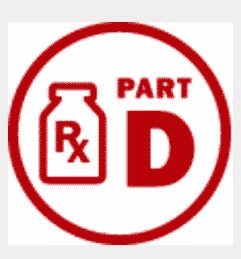 Medicare Changes Part D Deductible
Medicare Changes Part D Deductible
The change that gets the most recognition this year is the Medicare Part D changes deductible. Medicare changes Part D deductible from $350 in 2016 to $400 in 2017. That is a 14% increase to the deductible alone, which is a constant reminder to review your Medicare Part D plan each year with your agent.
Part D Shell Game
A $400 deductible is sizeable. Most of the Part D plans have the deductible, but some do not. The way those plans are able to eliminate the deductible is by spreading the deductible out  through the various co-pays on your medications. The other way is to apply the deductible only to higher Tier, more expensive drugs, e.g., Tier 3-5 medication. The Part D plans are a bit of a shell game shifting costs from this drug to another. It is important to not be distracted by the various co-pays. Medicare.gov has a wonderful medication calculator that will compared all of the Part D plans in your area side-by-side. You want to use that tool and focus on the total number that you will spend. Too often, Medicare beneficiaries will focus on one co-pay or an initial deductible. The bottom line is the total amount coming out of your pocket.
through the various co-pays on your medications. The other way is to apply the deductible only to higher Tier, more expensive drugs, e.g., Tier 3-5 medication. The Part D plans are a bit of a shell game shifting costs from this drug to another. It is important to not be distracted by the various co-pays. Medicare.gov has a wonderful medication calculator that will compared all of the Part D plans in your area side-by-side. You want to use that tool and focus on the total number that you will spend. Too often, Medicare beneficiaries will focus on one co-pay or an initial deductible. The bottom line is the total amount coming out of your pocket.
 Medicare.gov Medication Calculator
Medicare.gov Medication Calculator
That being said, we all have limited budgets. A big deductible may be too big for your wallet. It may make sense to use a Part D plan without a deductible to even out your costs over the year. If you are going on a Part D plan more than half way through the year because you just turned 65, it may make sense to pick a plan with no deductible. Why pay the big deductible and turn around and pay it again in January? That is why it is important that your agent go through your list of medications, talk about the costs, and figure out the best plan for you. An experienced agent should be able to effectively use the Medicare prescription drug calculator to show you how your medication costs will play out in the coming year. Also remember to check whether you qualify for the EXTRA HELP Program.




